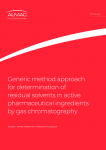Genentech makes cell line identification faster and cheaper

The Roche subsidiary made the discovery when it centralised the banking of its cell lines and found some discrepancies and naming issues.
It realised a standard suite of quality controls was required to prevent cross-contamination of cell lines – which usually happen through human error such as mislabelling or poor tissue culture techniques.
The researchers proposed a framework it published in Nature for cell line annotation using short tandem repeats (STRs) and single nucleotide polymorphisms profiles. The blueprint sets out a way of combatting problems of cell line misidentification, contamination and poor annotation.
Genentech began by cleaning up existing lists of cell lines using a standard STR test, gathering DNA profiles from seven DNA databases, and whittling down 8,577 profiles to 2,787 unique profiles.
STRs are what forensic scientists use for DNA fingerprinting, but Genentech cancer scientist Richard Neve, who led the effort to develop the new standards, said:
“We found that not only was it expensive, but we didn’t really have the ability to implement it internally. We had to look for other methods and we quickly discovered that using single nucleotide polymorphisms, or SNPs, for identifying unique cell lines was a lot cheaper and faster.”
Oncology focus
Genentech has opted now to obtain STR and SNP profiles for all new cell lines. In this way, STRs can be compared with existing external profiles, whereas SNP profiling offers an internal quality control for frequent surveillance of cell lines.
“The cells we mostly bank are oncology-focused, so all these lines are used for either basic research or some form of preclinical assay,” said Neve.
“SNP assays are significantly cheaper, so I think if people implement [our new diagnostic method] in their lab it will give them significant savings. I can also see that CMOs, organisations which already provide cell line authentication services by STR, could make a SNP assay available at a much cheaper cost than STR,” he added.
A 2007 review of material in repositories suggested one-third or more of cell lines are mislabelled or contaminated. Asked why scientists do not check their cell lines, Neve said:
“My bet on this is that it takes time and it takes money, and many organisations that fund research do not specifically fund cell line authentication. Depending on how many cell lines you use and how frequently you authenticate costs can really add up.”
An example of the depth of the problem of misidentified lines is Intestinal-407. This cell line was labelled and studied as normal gut epithelial cells was found to be contaminated by cervical cancer cells in 1967, dishearteningly 1300 papers are published based on them being gut epithelial cells, even as recently as last year, said Neve.
“We don't have this line in our bank, but I use it to illustrate the systematic failure of researchers, journals and reviewers to stop the use of misidentified lines.”
An editorial in Nature noted that specialist journals such as the International Journal of Cancer are already systematically asking authors to identify their cells, and Nature itself has been asking authors to authenticate since 2013, although it says most have not done so. With new resources available, Nature says it will now be asking all authors of papers involving cell liens to check their lines against publicly available lists of cells known to be problematic.
The Global Biological Standards Institute, a non-profit group in Washington DC, is also launching a social media campaign this week, #authenticate, to publicize the problem of misidentified cell lines.










